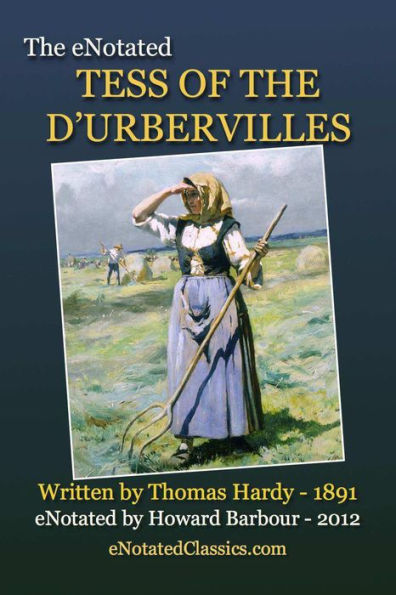Though most eBooks are simple conversions of paper books, "The eNotated Tess of the d'Urbervilles" is a completely new approach that takes advantage of the potential eBook technology offers to extend and enrich Thomas Hardy's writing in a way that's convenient to use while still unobtrusive to the reader.
First published by Hardy in 1891, this edition of "Tess" includes a Hardy biography, a chronology of his life, a timeline of major events, 27 illustrations (with eleven original drawings from the 1898 edition) and eNotations that extend Hardy's writing by providing a new layer of information behind the text the reader can access before, during, and after each chapter.
For instance, in Chapter 1, when Hardy mentions hedgerows, Barbour's eNotation tells us "Before the introduction of barbed wire livestock were detained in fields by stone walls, wooden fences or most commonly trimmed hedges. In medieval times when 'arable' or cropped fields were divided into strips and the strips allocated to the villagers according to station, the 'hedger' always got the strip adjacent to the hedge he tended, thus if the livestock broke through the hedge it was his crop they ruined first."
Hardy's "Tess of the d'Urbervilles: A Pure Woman Faithfully Presented," is perhaps Hardy's most beloved book - but his poignant and insightful novel is filled with 19th century agricultural terms, geographical and literary references, and Wessex idioms that may be lost to the modern reader. Howard Barbour, born not far from Hardy's Wessex, grew up listening to stories of late 19th century rural life told by a disappearing generation, and then as a young man worked in and studied agriculture just as the last vestiges of age-old practices were being swept away by the new. In this eNotated edition of "Tess," Barbour provides the background and explanations readers need to thoroughly understand, appreciate, and enjoy Hardy's classic by adding hundreds of electronic annotations linked to words and phrases in Hardy's original text.
If you are going to read "Tess" for the first time - or return to this wonderful story after some years - you will best enjoy and most throughly understand "Tess" with this unique eNotated edition.



